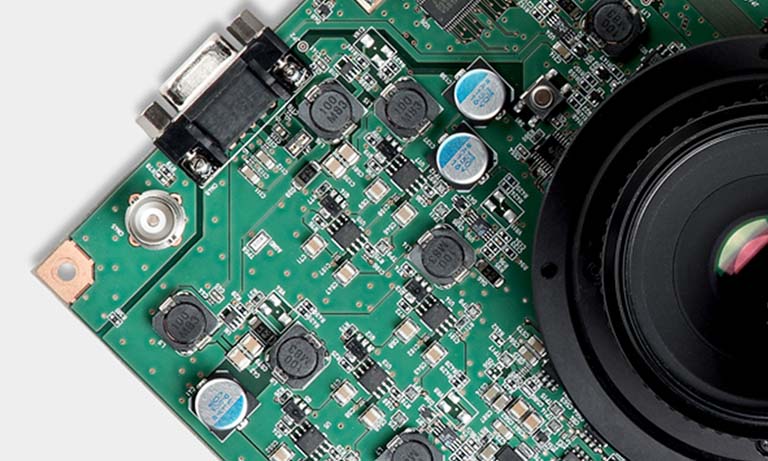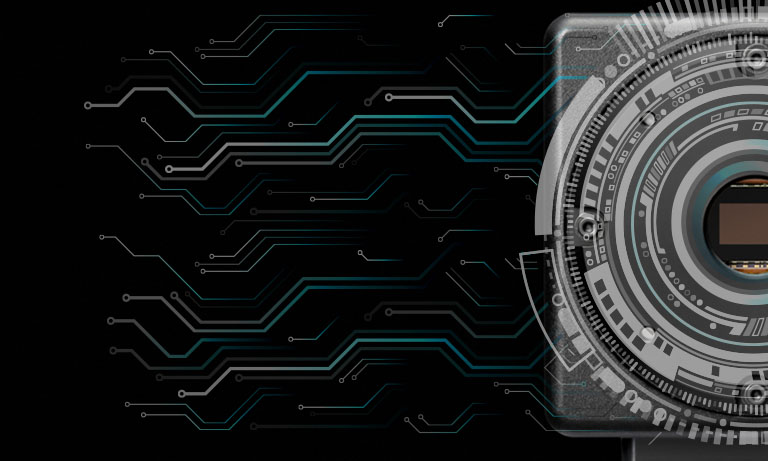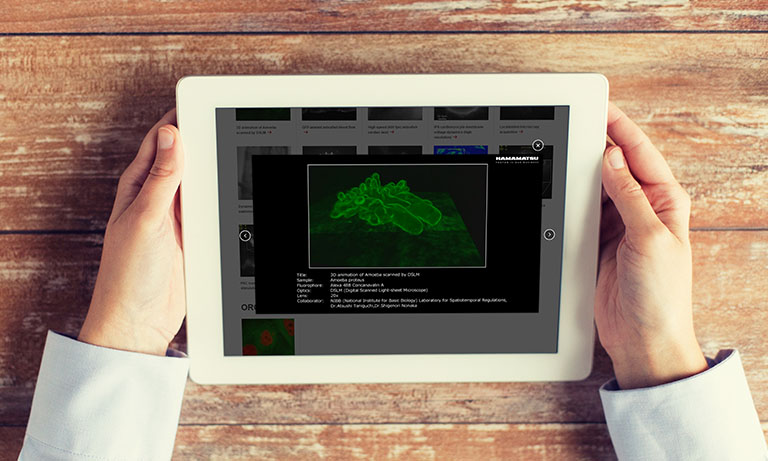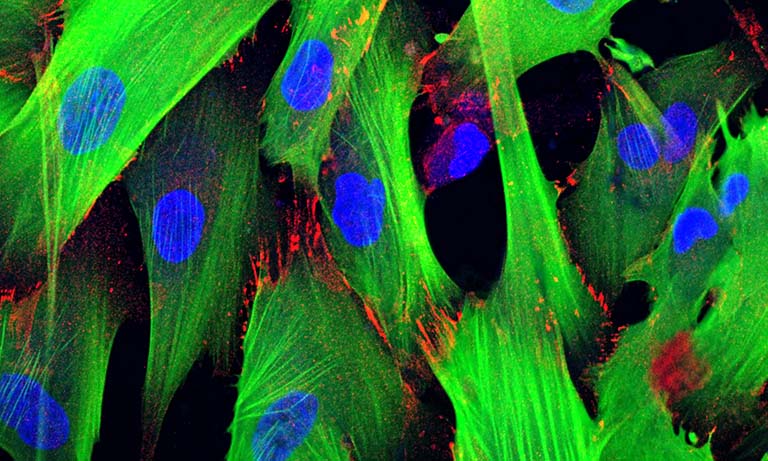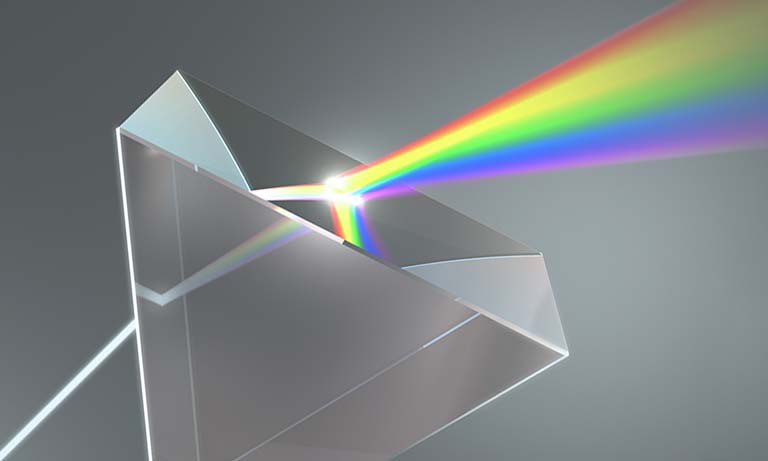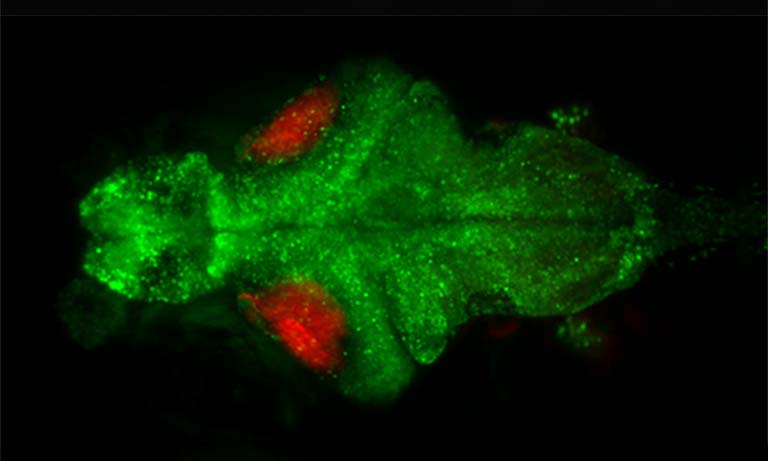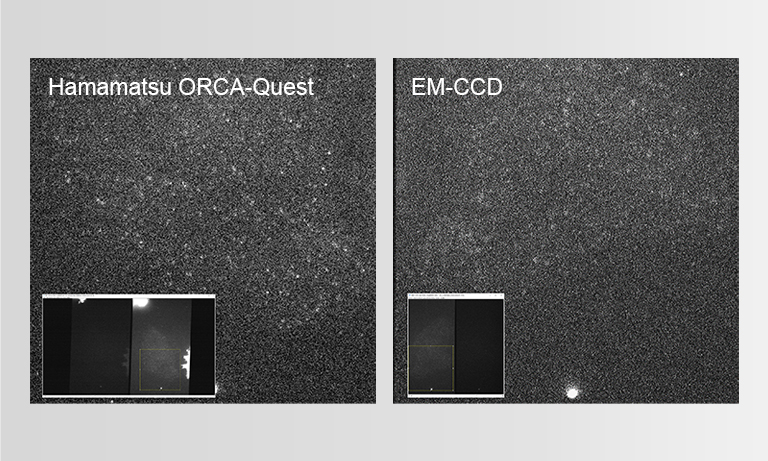United Kingdom (EN)
Select your region or country.
qCMOS camera evaluation in Tip-enhanced Raman scattering
qCMOS camera has excellent weak signal detection ability because of its excellent characteristics such as very low dark noise. In this experiment, a qCMOS camera and a grating spectrometer were combined, and a new software was developed to control both at the same time for detecting Tip-enhanced Raman scattering (TERS). For this purpose, the detection capability of qCMOS camera on Raman or weak signal Raman is tested, and more application possibilities are explored.
Background
A scanning tunneling microscope (STM) is capable of more than just observing and manipulating the nanoworld with atomic resolution, its tunneling current can also be used as a local source of excitation to produce light from the junction, the so-called STM induced luminescence (STML), which can provide additional information on local electromagnetic properties pertaining to the decay of various excitations. On the other hand, by taking advantage of the strong signal enhancement generated at a metallic tip apex, spatially resolved Raman spectra can be achieved using tip-enhanced Raman scattering (TERS), which can offer chemical recognition ability in real space with high spatial resolution. Furthermore, tip-enhanced photoluminescence (TEPL) allows to explore molecular photo physics and the light-matter interaction as well as nanoscale energy transfer at the sub-molecular scale.

Fig.1 Experiment diagram of Tip-enhanced Raman scattering
For this experiment, the sample (MoS2) was put in STM, and the spectra was excited by 532 nm DPSS laser, then the Raman signal was collected by a home-built cube with optical path, as shown in Fig.1. The qCMOS camera, ORCA-Quest was mounted in a 550 mm focal length spectrometer to collect the Raman spectrum.
Experiment
As discussed above, the sample (MoS2) was put in STM and excited by a 532 nm DPSS laser. We used a fiber and focusing cube to collect the Raman spectrum of MoS2, shown in Fig.2. The weak Raman spectrum was collected by ORCA-Quest via 180 s exposure time. Due to the low readout noise, the SNR is better than a deep cooling CCD camera. Meanwhile, due to the 4.6*4.6 μm pixel size, the resolution (FWHM) is better than normal CCD cameras whose pixel size is 13 μm, 26 μm or 20 μm.

Fig.2 Optical setup picture
Results and discussion
For comparison, another spectrometer acquisition system, liquid nitrogen cooled CCD + 300 mm focal length grating spectrometer, was used to make comparisons with our ORCA-Quest + 550 mm focal length spectrometer. The setup is exactly the same before the collection fiber, with replacement only in the fiber and spectrum acquisition parts.

Fig.3(a) MoS2 Raman signal by qCMOS camera, ORCA-Quest + 550 mm focal length grating spectrometer (f/6.4), 200 μm optical fiber, 300 g/mm grating, 180 s exposure time

Fig.3(b) MoS2 Raman signal by liquid nitrogen cooled CCD + 300 mm focal length grating spectrometer (f/3.9), 400 μm fiber, 600 g/mm grating, 180 s exposure time
From the comparison results, ORCA-Quest + 550 mm focal length grating spectrometer has three highlights, which are
1) Different from traditional sCMOS cameras, which are generally used for short exposure applications, qCMOS cameras have an overall noise level comparable to liquid nitrogen cooled CCD under 180 s exposure time, thus obtaining excellent Raman signal to noise ratio. Even if the influence of fiber and spectrometer on the light collection efficiency is removed, the signal to noise ratio of qCMOS camera is still comparable to that of liquid nitrogen cooled CCD.
2) For CCD detectors, cosmic ray interference at long exposures is difficult to remove. While, under the long integration time, qCMOS has better anti-cosmic ray interference ability than liquid nitrogen cooled CCD.
3) The dark noise suppression level of qCMOS was also validated in the long integration time and is comparable to the level of liquid nitrogen cooled CCD.
About Dr. Han Tao

Doctor Han Tao graduated from Fudan University in Shanghai in 2005. After many years of technical work in HORIBA Company, he founded Shanghai UPU Optoelectronic Technology Co., Ltd. (http://www.upu-opt.com/) as a co-founder in 2018,who has accumulated nearly 20 years of experience in the field of spectroscopy and spectral measurement.
Shanghai UPU Optoelectronic Technology Co., Ltd. is a high-tech enterprise specializing in the field of optoelectronic technology. The company's business direction is mainly imaging and spectrum. Meanwhile, in recent years, the company have focused on the development and production of confocal Raman spectroscopy and Fluorescence spectroscopy systems. According to the demand of scientific research market, we adopt standardized product ideas, to provide users with a variety of high-performance standardized product modules and customized overall system.
Product used in this application & case study
The C15550-20UP is the world's first camera to incorporate the qCMOS image sensor. The camera achieves the ultimate in quantitative imaging.
Other Application & Case study
- Confirmation
-
It looks like you're in the . If this is not your location, please select the correct region or country below.
You're headed to Hamamatsu Photonics website for GB (English). If you want to view an other country's site, the optimized information will be provided by selecting options below.
In order to use this website comfortably, we use cookies. For cookie details please see our cookie policy.
- Cookie Policy
-
This website or its third-party tools use cookies, which are necessary to its functioning and required to achieve the purposes illustrated in this cookie policy. By closing the cookie warning banner, scrolling the page, clicking a link or continuing to browse otherwise, you agree to the use of cookies.
Hamamatsu uses cookies in order to enhance your experience on our website and ensure that our website functions.
You can visit this page at any time to learn more about cookies, get the most up to date information on how we use cookies and manage your cookie settings. We will not use cookies for any purpose other than the ones stated, but please note that we reserve the right to update our cookies.
1. What are cookies?
For modern websites to work according to visitor’s expectations, they need to collect certain basic information about visitors. To do this, a site will create small text files which are placed on visitor’s devices (computer or mobile) - these files are known as cookies when you access a website. Cookies are used in order to make websites function and work efficiently. Cookies are uniquely assigned to each visitor and can only be read by a web server in the domain that issued the cookie to the visitor. Cookies cannot be used to run programs or deliver viruses to a visitor’s device.
Cookies do various jobs which make the visitor’s experience of the internet much smoother and more interactive. For instance, cookies are used to remember the visitor’s preferences on sites they visit often, to remember language preference and to help navigate between pages more efficiently. Much, though not all, of the data collected is anonymous, though some of it is designed to detect browsing patterns and approximate geographical location to improve the visitor experience.
Certain type of cookies may require the data subject’s consent before storing them on the computer.
2. What are the different types of cookies?
This website uses two types of cookies:
- First party cookies. For our website, the first party cookies are controlled and maintained by Hamamatsu. No other parties have access to these cookies.
- Third party cookies. These cookies are implemented by organizations outside Hamamatsu. We do not have access to the data in these cookies, but we use these cookies to improve the overall website experience.
3. How do we use cookies?
This website uses cookies for following purposes:
- Certain cookies are necessary for our website to function. These are strictly necessary cookies and are required to enable website access, support navigation or provide relevant content. These cookies direct you to the correct region or country, and support security and ecommerce. Strictly necessary cookies also enforce your privacy preferences. Without these strictly necessary cookies, much of our website will not function.
- Analytics cookies are used to track website usage. This data enables us to improve our website usability, performance and website administration. In our analytics cookies, we do not store any personal identifying information.
- Functionality cookies. These are used to recognize you when you return to our website. This enables us to personalize our content for you, greet you by name and remember your preferences (for example, your choice of language or region).
- These cookies record your visit to our website, the pages you have visited and the links you have followed. We will use this information to make our website and the advertising displayed on it more relevant to your interests. We may also share this information with third parties for this purpose.
Cookies help us help you. Through the use of cookies, we learn what is important to our visitors and we develop and enhance website content and functionality to support your experience. Much of our website can be accessed if cookies are disabled, however certain website functions may not work. And, we believe your current and future visits will be enhanced if cookies are enabled.
4. Which cookies do we use?
There are two ways to manage cookie preferences.
- You can set your cookie preferences on your device or in your browser.
- You can set your cookie preferences at the website level.
If you don’t want to receive cookies, you can modify your browser so that it notifies you when cookies are sent to it or you can refuse cookies altogether. You can also delete cookies that have already been set.
If you wish to restrict or block web browser cookies which are set on your device then you can do this through your browser settings; the Help function within your browser should tell you how. Alternatively, you may wish to visit www.aboutcookies.org, which contains comprehensive information on how to do this on a wide variety of desktop browsers.
5. What are Internet tags and how do we use them with cookies?
Occasionally, we may use internet tags (also known as action tags, single-pixel GIFs, clear GIFs, invisible GIFs and 1-by-1 GIFs) at this site and may deploy these tags/cookies through a third-party advertising partner or a web analytical service partner which may be located and store the respective information (including your IP-address) in a foreign country. These tags/cookies are placed on both online advertisements that bring users to this site and on different pages of this site. We use this technology to measure the visitors' responses to our sites and the effectiveness of our advertising campaigns (including how many times a page is opened and which information is consulted) as well as to evaluate your use of this website. The third-party partner or the web analytical service partner may be able to collect data about visitors to our and other sites because of these internet tags/cookies, may compose reports regarding the website’s activity for us and may provide further services which are related to the use of the website and the internet. They may provide such information to other parties if there is a legal requirement that they do so, or if they hire the other parties to process information on their behalf.
If you would like more information about web tags and cookies associated with on-line advertising or to opt-out of third-party collection of this information, please visit the Network Advertising Initiative website http://www.networkadvertising.org.
6. Analytics and Advertisement Cookies
We use third-party cookies (such as Google Analytics) to track visitors on our website, to get reports about how visitors use the website and to inform, optimize and serve ads based on someone's past visits to our website.
You may opt-out of Google Analytics cookies by the websites provided by Google:
https://tools.google.com/dlpage/gaoptout?hl=en
As provided in this Privacy Policy (Article 5), you can learn more about opt-out cookies by the website provided by Network Advertising Initiative:
http://www.networkadvertising.org
We inform you that in such case you will not be able to wholly use all functions of our website.
Close

